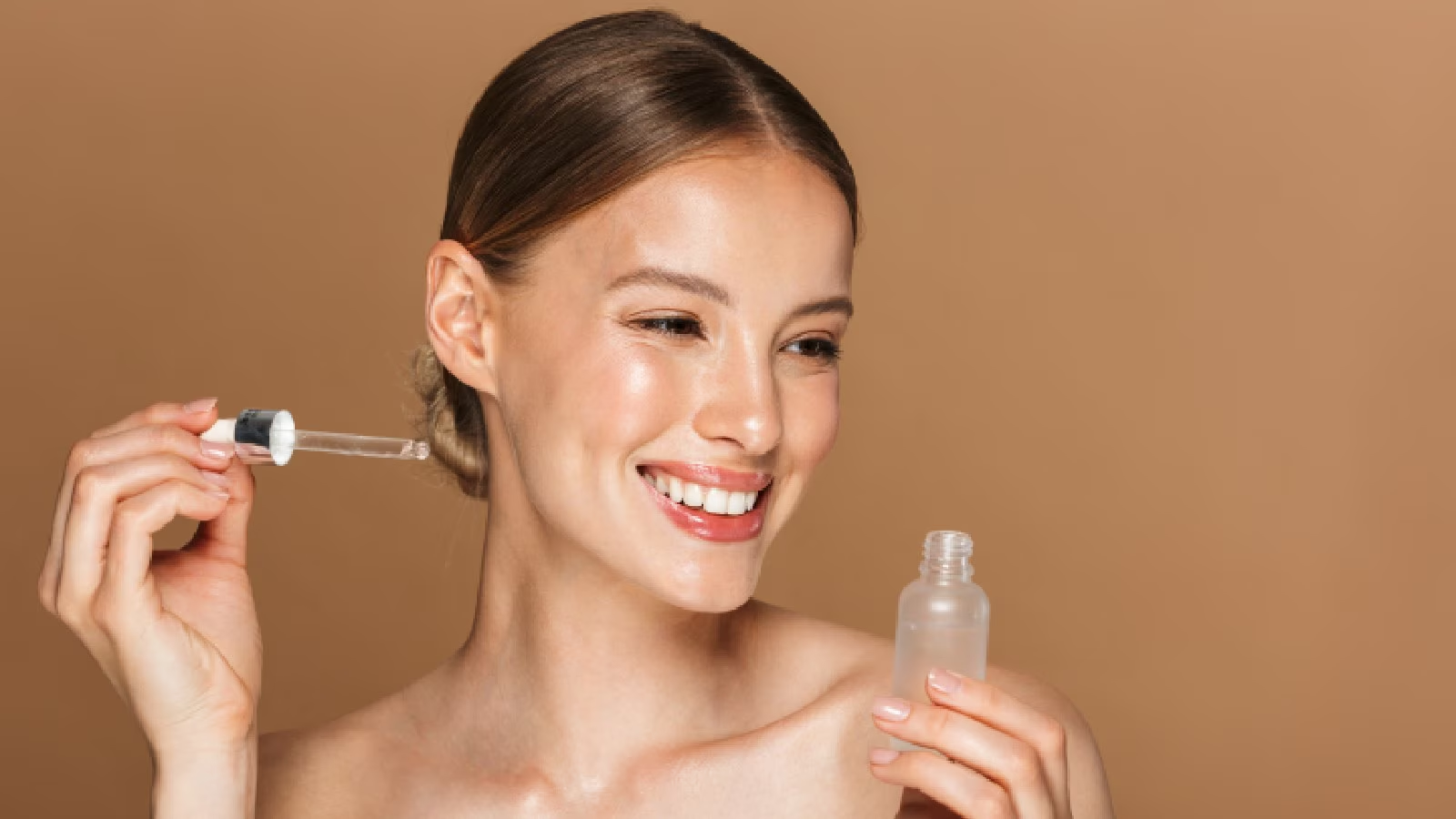Introduction
Your skin is your body’s largest organ, and like any other part of your body, it requires attention and care. One of the most crucial aspects of skincare is choosing the right products suited to your skin type. Using the wrong products can lead to irritation, breakouts, dryness, or even premature aging. But with so many products on the market, how do you know which ones are best for you?
In this article, we will explore how to determine your skin type, what products to use for each type, and tips for building a skincare routine that works. Whether you’re new to skincare or looking to refine your regimen, this guide will help you achieve healthy, glowing skin.
Understanding Your Skin Type
Before diving into product recommendations, it’s important to first understand your skin type. There are five primary skin types, each with its own unique needs:
- Normal Skin: Not too oily, not too dry, and rarely sensitive. If you have normal skin, you enjoy a balanced complexion that doesn’t easily break out or feel tight.
- Oily Skin: Characterized by excessive oil production, especially in the T-zone (forehead, nose, and chin). Oily skin often experiences shine throughout the day and may be prone to acne or clogged pores.
- Dry Skin: Dry skin can feel tight, rough, or flaky. It may show visible signs of redness and fine lines. This skin type lacks moisture and often feels uncomfortable, especially in colder months.
- Combination Skin: A mix of oily and dry areas. Usually, the T-zone is oily, while the cheeks are dry or normal. Combination skin can be tricky to manage, as different areas require different care.
- Sensitive Skin: Prone to redness, irritation, and reactions from certain products or environmental factors. Sensitive skin may be dry or oily, but what sets it apart is its tendency to react negatively to various ingredients.
To find out your skin type, take note of how your skin feels after cleansing. Does it feel tight and dry, or is it shiny and greasy? Pay attention to any sensitivities or breakouts. This self-assessment will help you identify which category your skin falls into.
The Best Skincare Products for Each Skin Type
1. Normal Skin
Characteristics: Smooth, balanced, and not prone to breakouts.
:max_bytes(150000):strip_icc()/skincareorder-4573fe6c99674d48b06ebb636ae8ca88.png)
Product Recommendations:
- Cleansers: Look for gentle, hydrating cleansers that maintain your skin’s natural moisture balance. A sulfate-free formula is ideal.
- Moisturizers: Lightweight, non-greasy moisturizers that hydrate without overwhelming the skin are perfect for normal skin. A gel-based moisturizer works well.
- Exfoliators: Exfoliating once or twice a week can help maintain a smooth complexion. Choose a mild scrub or chemical exfoliant with AHAs (alpha hydroxy acids).
- Sunscreen: SPF 30 or higher is a must. Opt for a broad-spectrum, non-comedogenic sunscreen that won’t clog pores.
Ingredient Focus:
- Hyaluronic Acid: A key ingredient for retaining moisture.
- Vitamin C: Known for its antioxidant properties and ability to brighten the skin.
Routine Tip: Keep it simple. Normal skin doesn’t need overly complex products. A basic routine of cleanser, toner, moisturizer, and sunscreen will keep your skin healthy.
2. Oily Skin
Characteristics: Shiny, greasy appearance with enlarged pores. Prone to blackheads and acne.
Product Recommendations:
- Cleansers: Opt for a foaming or gel-based cleanser that helps remove excess oil. Look for products containing salicylic acid, which can penetrate pores and clear out excess oil.
- Toners: Use an alcohol-free toner with ingredients like witch hazel, which helps tighten pores and control oil production.
- Moisturizers: Choose oil-free, lightweight, and non-comedogenic moisturizers. Gel-based formulas with added mattifying properties work well.
- Exfoliators: Salicylic acid exfoliants are great for oily skin, as they help deep-clean pores and prevent breakouts.
- Sunscreen: Choose a gel or water-based sunscreen that won’t leave a greasy finish.
Ingredient Focus:
- Salicylic Acid: Helps reduce oil and prevent acne.
- Niacinamide: Known for controlling oil production and soothing the skin.
Routine Tip: Keep your routine focused on oil control without stripping your skin of moisture. Over-cleansing can lead to more oil production.
3. Dry Skin
Characteristics: Rough texture, flaky patches, redness, and a feeling of tightness.
Product Recommendations:
- Cleansers: Choose a hydrating, creamy cleanser that doesn’t strip the skin’s natural oils. Avoid harsh foaming cleansers.
- Moisturizers: Look for thick, nourishing moisturizers with ingredients like ceramides, glycerin, and hyaluronic acid that lock in moisture.
- Exfoliators: Exfoliate gently with a mild scrub or an enzyme-based exfoliator to avoid irritation. Opt for a hydrating exfoliant that won’t leave your skin feeling tighter.
- Masks: Sheet masks or hydrating clay masks can boost moisture levels and rejuvenate dry skin.
- Sunscreen: Choose a rich sunscreen with moisturizing properties.
Ingredient Focus:
- Hyaluronic Acid: For plumping and maintaining hydration.
- Ceramides: Help restore the skin’s moisture barrier.
Routine Tip: Hydration is key. Apply products that lock moisture in and keep your skin barrier intact.
4. Combination Skin
Characteristics: Oily in the T-zone and dry or normal on the cheeks.
Product Recommendations:
- Cleansers: A balanced, gentle cleanser that removes oil without drying out the cheeks. A mild gel or cream-based cleanser works best.
- Moisturizers: A lightweight moisturizer for the T-zone, and a richer cream for the dry areas.
- Exfoliators: A gentle exfoliant that works for both dry and oily areas. Consider a mild chemical exfoliant, like lactic acid or a balanced AHA/BHA formula.
- Sunscreen: Use a lightweight sunscreen that won’t clog pores but still hydrates.

Ingredient Focus:
- Glycolic Acid: A gentle exfoliant that can balance both dry and oily areas.
- Aloe Vera: Soothing and hydrating, great for combination skin.
Routine Tip: Use multi-tasking products that cater to the needs of both oily and dry areas. Customize your routine based on how your skin feels each day.
5. Sensitive Skin
Characteristics: Prone to redness, irritation, and reactions to certain ingredients.
Product Recommendations:
- Cleansers: Opt for fragrance-free, hypoallergenic cleansers that are gentle on the skin. A cream-based or micellar water cleanser is ideal.
- Moisturizers: Choose calming, hydrating products with ingredients like aloe vera, chamomile, and calendula.
- Exfoliators: Avoid harsh physical scrubs. Stick to mild chemical exfoliants like lactic acid, which is gentle and hydrating.
- Masks: Avoid clay masks that can be drying. Instead, go for hydrating or calming masks.
- Sunscreen: Choose a mineral sunscreen with titanium dioxide or zinc oxide to avoid irritation from chemical filters.
Ingredient Focus:
- Aloe Vera: Soothes and calms irritation.
- Chamomile: Reduces redness and inflammation.
Routine Tip: Keep your routine simple and free from irritants. Focus on soothing, hydrating, and barrier-repairing products.
How to Build a Skincare Routine for Your Skin Type
Once you understand your skin type and know which products are best for you, it’s time to create a skincare routine. Here’s how to build an effective routine:
- Cleansing: The first step in any routine is cleansing. Choose a product suitable for your skin type to remove dirt, oil, and makeup. Cleanse your face twice a day—morning and night.
- Toning: Toners help balance the skin’s pH and prep it for the next steps. If you have oily or acne-prone skin, look for an astringent toner. For dry or sensitive skin, choose a hydrating or calming toner.
- Serums: Serums target specific skin concerns like fine lines, pigmentation, or acne. For example, use a Vitamin C serum in the morning to brighten your complexion, or a hyaluronic acid serum at night to hydrate.
- Moisturizing: Always follow up with a moisturizer to lock in hydration and prevent moisture loss. Choose a formula that suits your skin type and provides the necessary hydration without clogging pores.
- Sunscreen: Never skip sunscreen! Choose an SPF of 30 or higher, and apply it every morning to protect your skin from harmful UV rays.
Conclusion
Finding the right products for your skin type can make a world of difference in your skincare journey. By understanding your skin’s needs and selecting products that cater to those needs, you can maintain a healthy, glowing complexion. Remember, skincare isn’t a one-size-fits-all process—it’s about trial and error, consistency, and patience.
Whether you have oily, dry, sensitive, or combination skin, there’s a perfect skincare routine waiting for you. With the right products and the right routine, you’ll be able to keep your skin feeling fresh, balanced, and beautiful.



















































